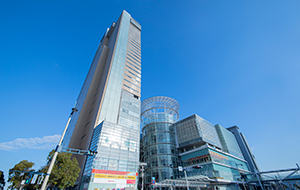
International Symposium
on High-temperature Oxidation and Corrosion 2022
16 Oct.-21 Oct.
2022
Takamatsu, Japan
HOME
 |
ISHOC-2022
International Symposium on High-temperature Oxidation and Corrosion 2022 |
16 Oct.-21 Oct.
|
 About ISHOC-2022 About ISHOC-2022 |
|
Welcome to ISHOC-2022. The ISHOC-2022 is a symposium where novel findings and theories on high-temperature oxidation and corrosion will be presented. The symposium follows the previous five symposia held in Japan;
|
 SCOPE SCOPE |
|
The ISHOC-2022 symposium aims to exchange and discuss the current research and latest scientific knowledge on high-temperature materials and their degradation by corrosion and oxidation. Another important aspect of this symposium is to keep our networks and collaborations, especially after we went through difficult times due to the COVID-19 pandemic. As increasing alarm over the current energy crisis of fossil fuels has generated a strong demand of renewable alternatives to CO2 mitigation, we are facing large transition to energy production to achieve a low-carbon society. Thus, exchanging opinion toward the future direction in this filed is an important purpose in this symposium. In addition to the traditional focus areas of coatings and environmental effects, we also invite papers that highlight alloy design for high-temperature materials that contribute to balancing the oxidation/corrosion resistance and mechanical performance. Other important topics for ISHOC-2022 include; |
 TOPICS TOPICS |
|
 |